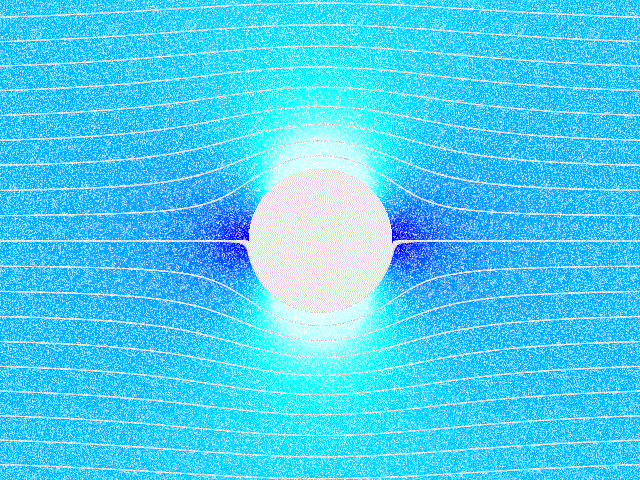 | ||
In mathematics, potential flow around a circular cylinder is a classical solution for the flow of an inviscid, incompressible fluid around a cylinder that is transverse to the flow. Far from the cylinder, the flow is unidirectional and uniform. The flow has no vorticity and thus the velocity field is irrotational and can be modeled as a potential flow. Unlike a real fluid, this solution indicates a net zero drag on the body, a result known as d'Alembert's paradox.
Contents
- Mathematical solution
- Stream function
- Physical interpretation
- Comparison with flow of a real fluid past a cylinder
- References
"The flow of an incompressible fluid past a cylinder is one of the first mathematical models that a student of fluid dynamics encounters. This flow is an excellent vehicle for the study of concepts that will be encountered numerous times in mathematical physics, such as vector fields, coordinate transformations, and most important, the physical interpretation of mathematical results."
Mathematical solution
A cylinder (or disk) of radius
where
where
Being incompressible,
The solution for
The solution that satisfies the boundary conditions is
The velocity components in polar coordinates are obtained from the components of
and
Being invisicid and irrotational, Bernoulli's equation allows the solution for pressure field to be obtained directly from the velocity field:
where the constants
In the figures, the colorized field referred to as "pressure" is a plot of
On the surface of the cylinder, or
Stream function
The flow being incompressible, a stream function can be found such that
It follows from this definition, using vector identities,
Therefore a contour of a constant value of
Physical interpretation
Laplace's equation is linear, and is one of the most elementary partial differential equations. This simple equation yields the entire solution for both
The dynamic pressure at the upstream stagnation point has value of
The low pressure on sides on the cylinder is needed to provide the centripetal acceleration of the flow:
where
The exact solution has, for the lowest pressure,
The low pressure, which must be present to provide the centripetal acceleration, will also increase the flow speed as the fluid travels from higher to lower values of pressure. Thus we find the maximum speed in the flow,
A value of
Comparison with flow of a real fluid past a cylinder
This symmetry of this ideal solution has the peculiar property of having zero net drag on the cylinder, a property known as d'Alembert's paradox. Unlike an ideal inviscid fluid, a viscous flow past a cylinder, no matter how small the viscosity, will acquire vorticity in a thin boundary layer adjacent to the cylinder. Boundary layer separation can occur, and a trailing wake will occur behind the cylinder. The pressure will be lower on the wake side of the cylinder, than on the upstream side, resulting in a drag force in the downstream direction.
